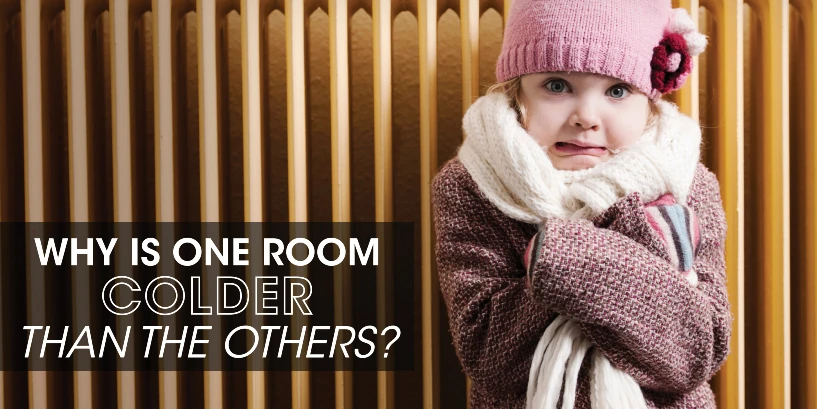
Wading through warm and cold spots in your swimming pool during the summer season might be normal, but wading through them in your home during the frigid winter – not so much. What’s causing the inconsistencies in temperature and comfort levels throughout your home? There may be any one or combination of issues to blame for those cold rooms...
Why Are Some Rooms Colder Than Others?
Blocked or Unopened Air Vents
Blocked or unopened vents are particularly common, whether closed off-season or by someone else in your home and later forgotten. Take a quick survey of air vents first and open them if needed – it’s simple and free.
Poor Insulation
Poor insulation is commonly found in both old and new homes, especially those with vaulted ceilings. Not sure what level you have in your home – or what’s recommended for your area? Most local power companies offer a free home energy audit.
Leaks
Leaks around doors, windows, pipes, and electrical outlets can really add up. Inspect your home thoroughly, properly addressing leaks with caulk, spray foam, or other suitable insulation. Even small leaks can make a huge difference in comfort – and your energy bills.
Blocked or Damaged Ducts
Animals and insect infestation, as well as damage from your family members during the annual attic rendezvous for holiday décor can result in clogged, broken, and disconnected ductwork. Eyeball all ductwork in your attic. Any insulation nearby ductwork that is notably dark and dirty could signify long-term leakage.
Dirty Filter
Make sure air filters are cleaned/replaced at least every two to three months. Dirty filters are a common culprit of uneven air flow, reduced efficiency, and cold rooms.
Poorly Installed Ductwork
Wondering, “Why are some rooms colder than others even though my system is new?” New systems have nothing to do with air distribution. Air distribution is reliant on ductwork. Poorly installed ductwork – or old ductwork that wasn’t upgraded alongside your system – may suffer imbalances. A skilled contractor will know to address these issues, installing carefully planned supply and return vents and progressively smaller duct sizes for a balanced system, and adjusting dampers (those little metal handles sticking out of the side of ducts) to further even out airflow and temperature.
Unbalanced Ductwork
If one room in your home is heating/cooling much faster than others, your ductwork may be unbalanced. Adjusting dampers can balance your system, better-controlling airflow to even things out. However, balancing a system is not easy, and some floor plans (particularly long ranch-style and two-story floor plans) are much more difficult to balance than others. Professional HVAC technicians have special tools for measuring airflow – and lots of experience adjusting dampers. In this situation, it is best to avoid DIY endeavors – lest you create more problems than you fix.
Inadequate Return Air
Oddly located or isolated air returns can cause uneven temperatures, especially in rooms with closed doors. Additional air returns may remedy these situations.
Wrong Size System
If your home has undergone an addition subsequent to the installation of its HVAC system, your unit may not be the proper tonnage necessary to accommodate the additional square footage. Only upgrading your system (or adding supplemental heat) will remedy this situation.
Contact Aire Serv for Professional Service
Ductwork giving you the cold shoulder? Warm up to the benefits of a happy, healthy system.
Contact Aire Serv® and schedule a (complimentary) ductwork inspection today.

 Click to call
Click to call


